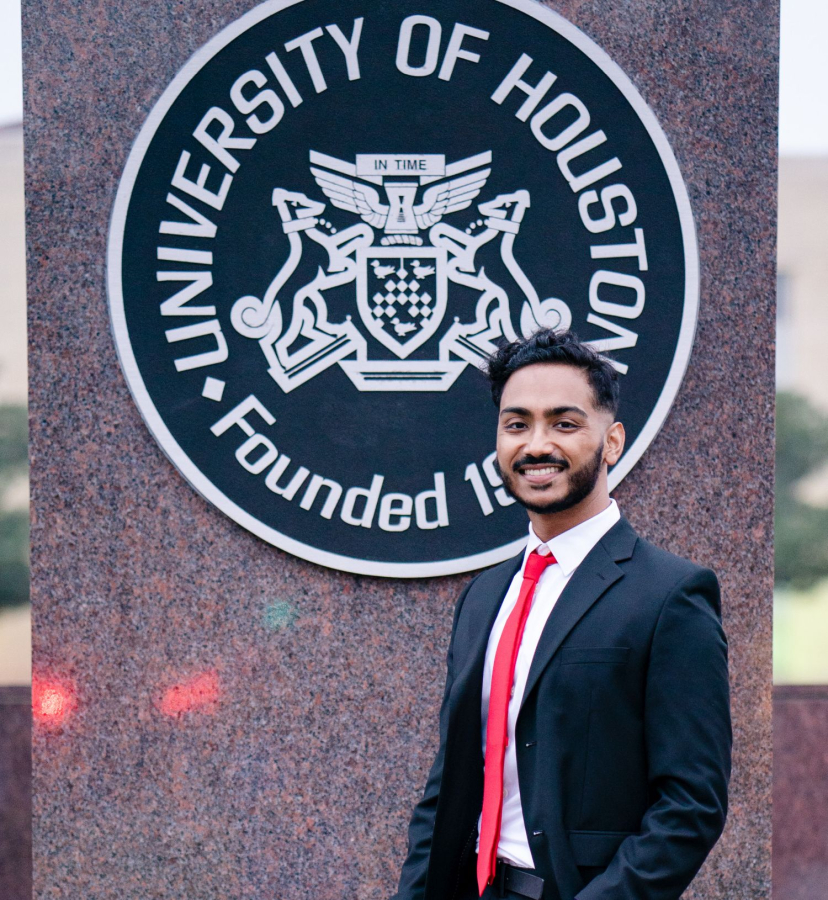After natural disasters, many people are understandably worried about the potential for structural damage to their homes. The research work of a Cullen College of Engineering Ph.D. student and his advising professor aims to provide them with another tool for identifying that damage.
Subin R. Varghese, an Electrical and Computer Engineering Department student, is an author of “Unpaired image-to-image translation of structural damage.” The paper was published in Advanced Engineering Informatics in April 2023. Varghese is advised by Vedhus Hoskere, assistant professor in the Civil and Environmental Engineering Department.
Varghese notes that by using AI, potential damage following natural disasters and other weather-related events could be detected. This is especially important because of the strain on inspectors and emergency personnel after these events.
“Computer vision methods could be used to automate the assessment. However, these computer vision methods are dependent on readily available data,” he said. “Since this data isn't available, we proposed our method of using cycle-consistent adversarial networks to augment the available data. This paper introduces a novel application of a type of generative AI called cycle-consistent adversarial networks. We apply this type of AI to the built environment to generate synthetic images of damaged buildings.”
Varghese presented his paper at the Engineering Mechanics Institute's annual conference and won second place at the Structural Health Monitoring and Control paper competition. It is a bit of positive, external validation for Varghese's effort to return to further his education, after he earned his B.S. in mechanical engineering from Cullen in 2018.
Varghese was working as an engineer in the oil and gas industry before deciding to pursue his doctorate, noting that he was intrigued by new technology he was encountering.
“While I was working as an engineer, I was introduced to some early technology where AI was used in oil and gas,” he said. “I was living in China and came back to Houston right before the lockdown. That was also when I learned that UH started the Engineering Data Science Masters program. I saw the huge potential AI had, and I wanted to pursue a career in it.”
At UH, Varghese said that his success in Hoskere's classes led him to wanting to pursue a more thorough exploration of the field.
“During the program, I learned about Deep Learning from Dr. Hoskere's class and I was inspired to continue to learn more about Deep Learning,” he said. “I got hooked doing research and found the world of AI and Deep Learning fascinating. Since I wanted to also make contributions to the field and hopefully make discoveries that could help humanity with AI, it was a natural progression to also work towards getting my Ph.D.”
Beyond Hoskere, Varghese noted that CEE professor Craig Glennie provided generous support during his Ph.D. studies. During his undergraduate degree pursuit, Andrea Prosperetti, Phaneendra Kondapi and Amit Amritkar inspired him to excel and recommended him for the Engineering Data Science program. David Mayrich, Saurabh Prasad and Marzia Cescon also provided him with support and “excellent classes that have helped me tremendously with my research.”
Varghese hopes to finish his doctorate in Dec. 2025. He wants to establish his own state-of-the-art research facility.
“My objective is to pioneer groundbreaking advancements in the field of AI to build a more resilient society as we are faced with challenges such as climate change, depleting natural resources, food and water scarcity, and economic inequality,” he said.
“Moreover, I am deeply passionate about uplifting and contributing back to the community that has been instrumental in my journey thus far. I intend to do this by creating an ecosystem within my lab that encourages learning, mentorship, and innovation. I see myself fostering the next generation of AI innovators, collaborating with educational institutions, and contributing to open-source projects. By doing this, I hope to democratize access to AI, making it more inclusive and beneficial for all.”
